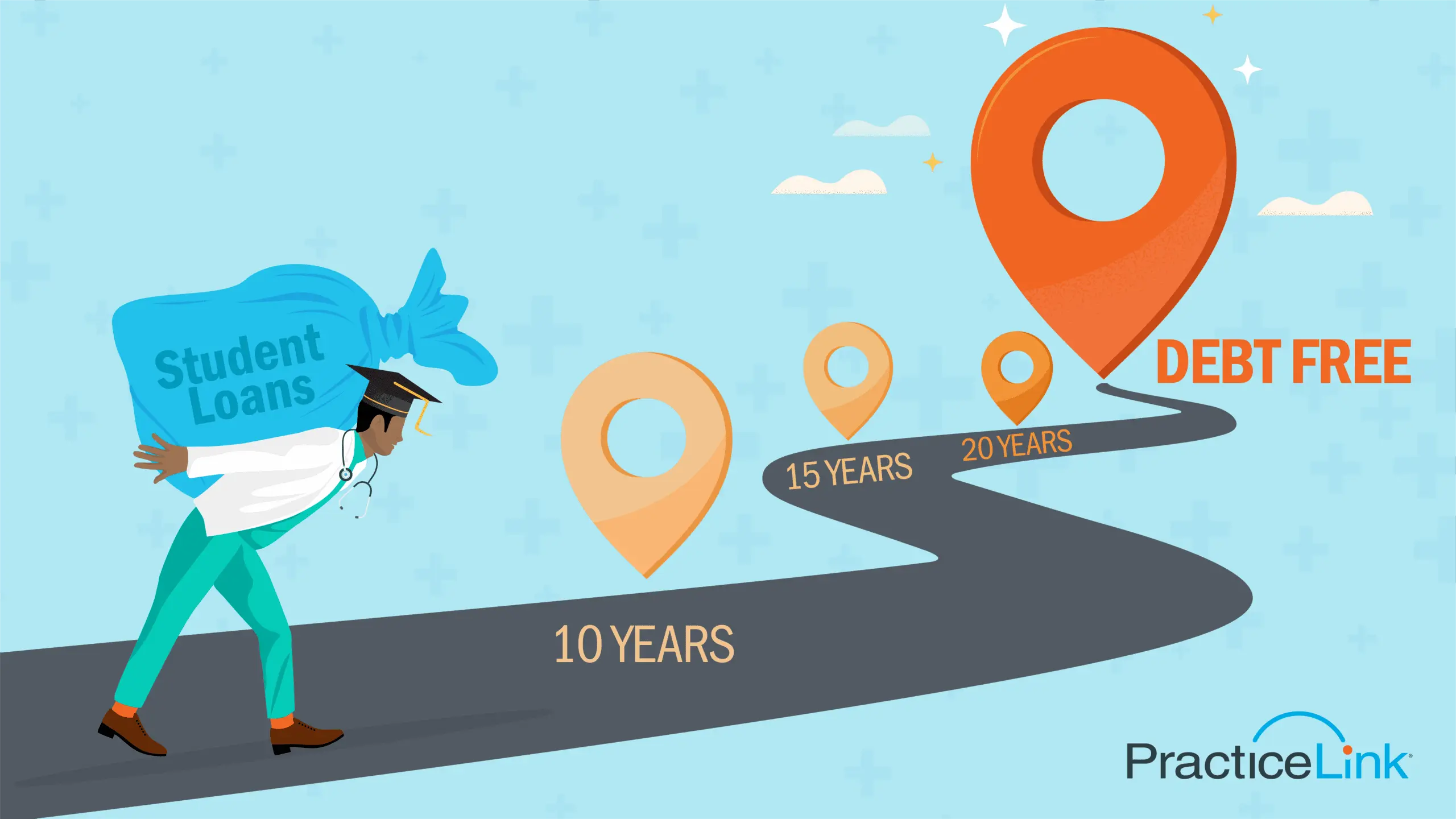How long does it take on average to pay off medical school debt?
By Megan Trippi September 27, 2025

How long does it take on average to pay off medical school debt?
Medical school opens the door to a rewarding career, but it comes with one of the largest financial burdens of any profession. Many doctors graduate with six-figure loans that can take years or even decades to pay off. A common question is: How long does it take on average to pay off medical school debt? Understanding repayment timelines is critical not only for financial planning but also for achieving personal goals like buying a home, saving for retirement or starting a family.
For context, physician student loans are among the highest professional education debts in the country, often exceeding $200,000. Knowing the average time to pay off medical school debt helps aspiring and current doctors set realistic expectations and explore strategies for reducing repayment stress.
How long does it take on average to pay off medical school debt?
The average time to pay off medical school debt ranges widely depending on repayment plans, interest rates and a doctor’s career path. On a standard repayment plan, most physicians would need around 10 years to pay off their loans. However, because many cannot afford standard payments during residency, they often extend repayment.
For those enrolled in income-driven repayment (IDR) programs, repayment may stretch to 20 or 25 years, unless they qualify for forgiveness. Doctors who aggressively pay down their balances, especially after training when salaries increase, may clear their loans in 8–12 years.
Ultimately, repayment timelines depend on whether a physician chooses to minimize monthly payments or aggressively reduce principal to save on interest.
What is the average age doctors pay off debt?
Because repayment often takes more than a decade, many physicians don’t become debt free until well into their 30s or 40s. The average age doctors pay off debt is influenced by specialty choice, income level and repayment strategy.
Those in high-paying specialties may eliminate loans sooner, while primary care doctors may rely on longer repayment terms or forgiveness programs.
Learning how to pay off medical school debt efficiently — through refinancing, extra payments or choosing the right repayment plan — can significantly shorten the timeline. Some doctors who prioritize debt reduction immediately after residency become debt free in their early 30s, while others balancing family expenses or lower salaries may carry debt into the middle of their careers.
How long does it take the average doctor to pay off student loans?
The repayment journey looks different for every doctor, but averages provide a clear picture. Most physicians take between 13 and 20 years to fully repay their student loans. This extended timeline is often due to interest accumulation during training and reliance on income-driven repayment.
Fortunately, medical school loan forgiveness programs can provide relief. Public Service Loan Forgiveness (PSLF), for instance, forgives remaining balances after 120 qualifying payments for doctors working in nonprofit or government settings. State-level programs and service-based incentives also reduce balances for physicians who commit to practicing in underserved areas.
For many doctors, forgiveness shortens the timeline dramatically compared to traditional repayment, making it a critical option to consider when evaluating career paths.
How long does med school debt take to pay off?
When broken down by monthly obligations, the numbers highlight why repayment takes so long. The average medical school debt monthly payment ranges between $2,000 and $3,500 under a standard 10-year plan (possibly 10 to 25 years next summer). During residency, however, most doctors cannot afford such high payments, so they choose deferment or lower IDR payments, which allows interest to accumulate.
This pause often means by the time doctors enter full practice, their balances have grown beyond the original loan amount. From there, repayment can take an additional 10–20 years unless they make larger-than-minimum payments.
Those who refinance at lower interest rates after residency may pay less monthly interest and shorten the overall timeline. Others, however, may opt for forgiveness, trading longer repayment for eventual debt cancellation.
Medical school debt is a defining financial reality for physicians. On average, it takes doctors 10–20 years to repay their loans, though the exact timeline depends on income, specialty and repayment strategy. While some physicians aggressively tackle debt and finish by their early 30s, others carry balances well into their career.
Exploring strategies such as refinancing, higher monthly payment or enrolling in medical school loan forgiveness programs can make repayment more manageable and less stressful.
Want to explore repayment strategies tailored to your career goals? Visit our resources on physician student loans to learn more about timelines, forgiveness programs and financial planning for doctors.

